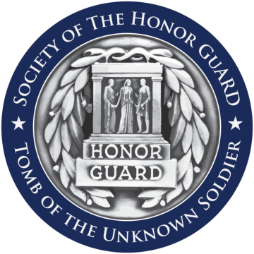Tomb Guards Never Forget: William R. Charette
13 years ago

In March, a key member of the heritage of the Tomb of the Unknown Soldier and Congressional Medal of Honor recipient William “Doc” Charette died at his home in Lake Wales, Florida. He was 79.
William Charette was born and raised in Ludington, Michigan, enlisted in the United States Navy in 1951 at the age of 19. Inspired by his sister, a nurse, he went in as a corpsman. In 1953 after completing his medical training he was quickly assigned to a Marine unit that was just north of the 38th parallel guarding a route into South Korea. On March 27, Chinese soldiers captured a strategic hill called Vegas forcing a counterattack from Charette’s Marine unit.
In a recent interview with The Ledger, he remembered that day stating, “it was the end of March and was a beautiful day, no snow and sun was shining”. Amid the fighting that day, he fell in with another platoon advancing up the hill and, “the next thing you know, I am treating the point man.” Soon, United States air power in the form of 500-lb bombs descended upon the Chinese. Pinned in their positions, they began to roll grenades down the hill onto his unit. “There were so many going off there was no way to count them”, he once said. Charette jumped on the Marine he was treating on instinct and absorbed the concussion of the blast with his body. The explosion ripped off his helmet and destroyed his medical kit while blinding him temporarily with his own blood. In the ensuing moments, he improvised bandages from his own uniform, treated many of the wounded all while exposing himself to a constant barrage of enemy fire.
For his selfless actions that day, he was nominated for and received the Congressional Medal of Honor on January 12, 1954 from President Dwight D. Eisenhower. Unbeknownst to him, he forever enshrined himself in the minds of all Tomb Guards when he was chosen to make the final selection of the Unknown Soldier from World War II in May of 1958. Without any deliberation on his part, he chose one of two unknowns from that war in a ceremony onboard the USS Canberra. In doing so, he forever designated the remains contained inside the casket to the perpetual care of our brotherhood.
His death leaves only 81 living Medal of Honor recipients. Those wishing to honor his memory are encouraged to donate to the Medal of Honor Museum at Patriots Point in Mount Pleasant, SC.
Reference Links
Latest News
Missing In Action
Posted October 14, 2025Tomb of the Unknown Soldier Foundation John Hamre, Neale Cosby, Richard Azzaro, and Mick Kicklighter Dear Colleagues, This article is being forwarded to capture the work of Joe Neubeiser, Joe...
America's Appreciation
Posted October 14, 2025America’s Appreciation Benjamin Bell (2001-2004) Veteran’s Day I wear a lanyard at work. It says “US ARMY,” and I’ve adorned it with accouterments. There are two pins commemorating certifications...
The Ship in the Desert
Posted October 14, 2025The Ship in the Desert Larry Seaton, SHGTUS Historian 14th Tomb Guard Reunion We are all familiar with the connection between the USS Olympia and the WWI Unknown Soldier. The Unknown Soldier’s...
Support the Society
The Society of the Honor Guard, Tomb of the Unknown Soldier (SHGTUS) is able to provide our programs, events, assistance, scholarships, and services due to the generosity of its members, organizations, and individuals. SHGTUS does not receive institutional funding. Note: The Society of the Honor Guard, Tomb of the Unknown Soldier is a 501(c)(3) organization, so your contributions may be fully tax deductible.
Learn More
Did you know?
Is the rifle that the Sentinel carries loaded?
Tomb Guards carry fully functional M14 rifles. Given the current climate surrounding the relatively recent tragic events in Canada (attack upon the guard at the Canadian War Memorial), we will no longer be answering questions relating to specifics regarding current security and armament at the Tomb of the Unknown Soldier. We appreciate your understanding.
Rest assured, that the US Army has the post secured as it has been since we started guard duty at the shrine in 1926.

